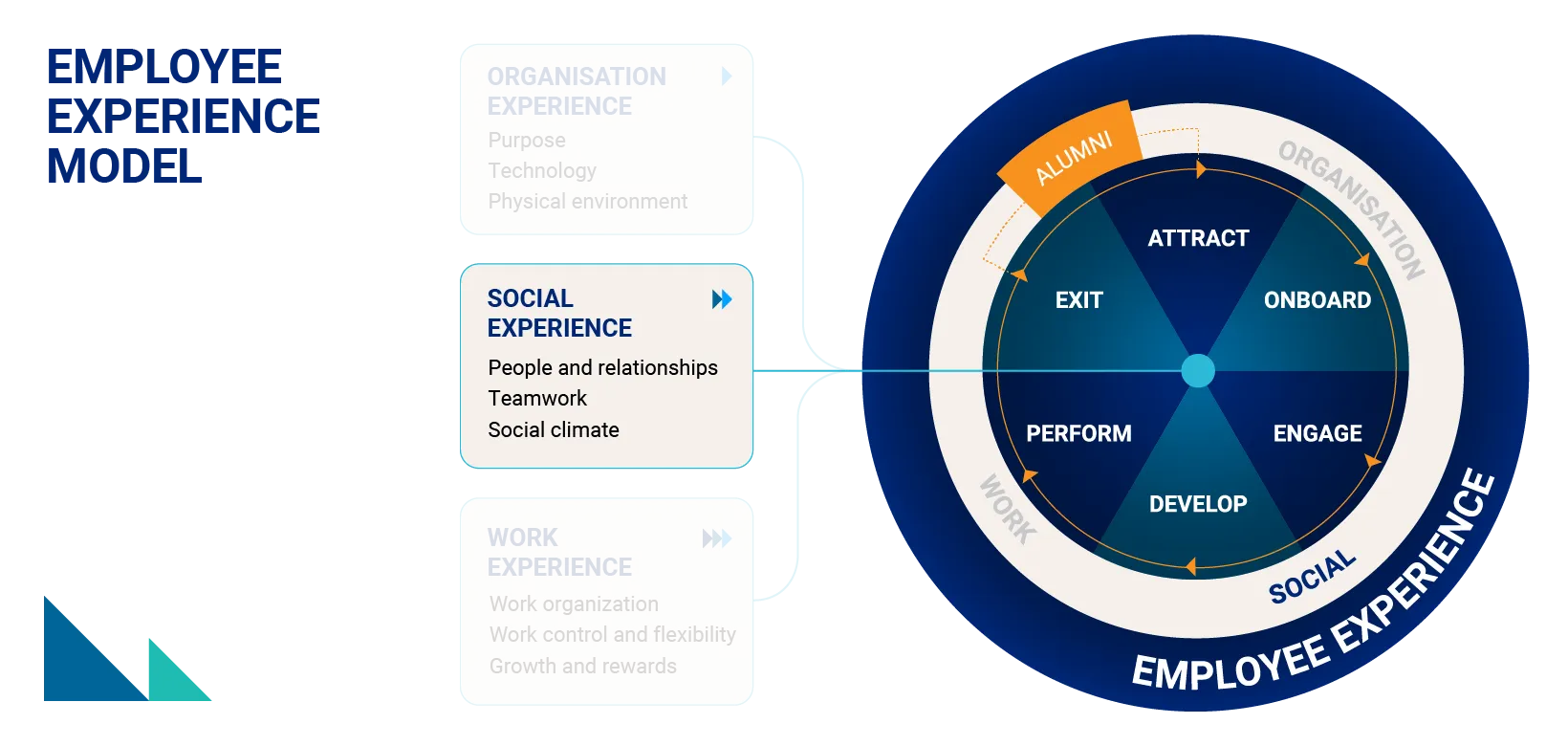Article 4 - Employee experience (EX): Getting your social experience right

- The people and relationships at work, and whether employees feel like they are treated as a contributor to the team’s outputs.
- Encouraging teamwork, helping team members to trust each other, and the wider business, to create an environment where innovation is encouraged, and failure permitted.
- The social climate, and whether they feel welcome and a sense of belonging to their work community.

People and relationships
Teamwork built on trust
The social climate
Implementing a better social experience
People and relationships: Your action steps
If you don’t already have a formal recognition program, consider your options. Company-wide newsletters, townhalls, regular team catchups could hold space for verbal recognition programs, and tangible reward programs can be designed to offer incentives to individuals. Also consider upskilling opportunities for managers so they understand the benefits of recognition and appreciation.
Are your employees still engaging with the recognition programs you’ve put in place? Fine-tune any initiatives based on feedback, to ensure that efforts continue to resonate with teams.
Teamwork
Social climate
If you need help in creating an excellent employee experience, reach out to one of our expert consultants today.
Search for candidates
Management advice
How to decide who gets a pay rise
Manage the performance of contingent workers
Australian Skills Classification
The core skills you need in your talent strategy
Tips for creating a strategic vision
Why you need a succession plan
Diversity, equity, and inclusion activities
The rise of the contingent workforce
Diversity, equity and inclusion
10 Way to Improve Workplace Culture
Mitigating co-employment risks
Leading people through volatile times
Upskilling for an AI Future report
How to reenergise a tired team
Top tips for managing your multi-generational workforce
Why is organisational purpose important and how can you define it?
Managing your contingent workforce
Your introduction to employee experience
Coaching & On-the-job training
Family-friendly work practices
How to conduct a performance review
How to establish if a manager will succeed
Bridging the digital skills gap
Talent management for on-demand staff
Whose responsibility is upskilling?
How to offer career progression
Pros and cons of salary transparency
How to foster innovative thinking in your team
Retention strategies to retain top talent

